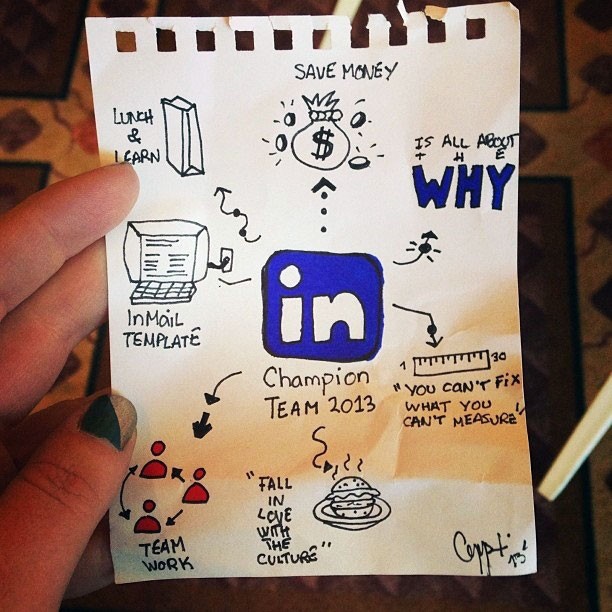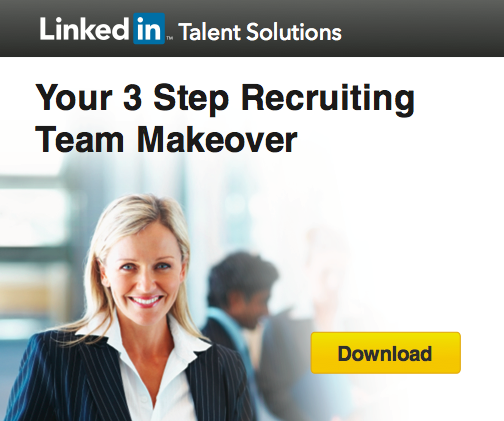7 Steps to Optimizing the Way Your Recruiting Team Operates
This post was written in collaboration with Jill Gaynor
The New Year is fast approaching, which means three things: an international rise in gym memberships, an increase in online course registration, and notepads filled with checklists of new promises made to yourself, your partner, and your team. All made with the best intentions.
While following through on resolutions like the ones listed above may seem implausible, that doesn’t mean they are unattainable. Similarly, your professional recruitment resolutions need not be unattainable either.
Below are seven steps, designed to arm you with a concrete plan of action so that you and your team can achieve all-star status in 2014.
Step 1: Admit you have problem
You can’t solve a problem until everyone admits that it exists and agrees on why changes need to be made.
Traditional recruiting problems fall into four categories: time to hire, quality of hire, cost of hire and source of hire. Figuring out which of these is the most pressing is the best place to start. Is it taking six months or more to fill your open reqs? Are you unable to find and keep top talent? Are your agency costs busting your budget? The sooner you identify the problem and everyone gets on board with why change needs to happen, the easier it will be to prioritize your challenges and develop a plan of attack.
Step 2: Prioritize your challenges
Everyone has challenges. If you try to tackle them all at once you will likely fail. So instead of looking at a laundry list of random tasks, break them up into categories.
To get started, try this segmentation: quick wins, major projects and thankless tasks. Quick wins are the changes that you can begin making today. They are easy (hence quick), and have decent impact (hence wins). Major projects take time, planning and resources, but have a high impact. Likewise, thankless tasks consume time and effort, but often times don’t have a great impact. You may want to re-evaluate and de-prioritize them.
Start with the quick wins and then begin planning for your major projects.
Step 3: Set goals & objectives
In “Eat that Frog!” author Brian Tracy writes, “Goals are the fuel in the furnace of achievement.” Now that you have identified the problem and prioritized your challenges, the next step is to define your goals and objectives.
Data-based goals are the easiest to measure and primarily fall into three broad categories: engagement, utilization and results. Depending on your challenges, as well as your team’s current proficiency levels, we recommend goals of increased engagement, more efficient utilization or maximized results. These goals can be monitored and tracked over time by accessing LinkedIn Recruiter usage reporting and your other system data tracking tools. Examples may be LinkedIn’s impact on your number of hires, InMail response rates and number of profiles in your pipeline.
Step 4: Come up with an action plan
You don’t need a degree in Project Management to write a good action plan. Just answer the following questions and you’ll be on your way: What needs to be done? Who will do it? What resources do you need? How will it be communicated? When will it be done?
TIP: Beware of “scope-creep”! This is when you are working to tackle one project and new or hidden challenges arise. If additional challenges are identified during the course of the plan, set them aside and address them in a different project.
Step 5: Set metrics and benchmarks to measure progress
At LinkedIn we are huge fans of the adage, “You can’t fix what you can’t measure.”
Depending on your goals and objectives, identify the critical data points that will reveal your level of success when measured. For example, if your goal is to increase your recruiters’ utilization of a specific tool or solution you use, you’ll want to track log-ins and usage of the core features by individual user. Assuming that measuring results is also a top priority, then more complex data tracking might be in order to get to a clean answer.
TIP: if you’re one of our customers, talk with your Recruitment Product Consultant or Relationship Manager about using the Linkedin Recruiter Scorecard as a primary benchmarking tool. It helps you to set and track Recruiter usage benchmarks by role or team to ensure you’re not measuring the tech sourcers on your team against the same benchmarks as your Executive Recruiters.
Step 6: Implement a change management strategy
If your goal is to truly transform the performance of your people, a change management strategy is essential.
Apply a method-based, data-driven solution in order to increase the pace and certainty of continued success. Your strategy should lay out the changes to take place, offer a clear rationale in the context of your business environment, provide ongoing education, require accountability and involve persistent communication of expectations from all stakeholders (i.e. players involved in your plan, decision makers, behavior influencers and end users).
Step 7: Measure results and reward success
Incentivize your team to become high achievers. Provide regular reports on their individual and team results and reward them when they achieve their goals.
Simple rewards like retail cards or gift certificates are much appreciated, though it’s not always necessary for rewards to have monetary value. We’ve worked with recruiting teams who have recognized success in all kinds of innovative ways – like awarding the recruiters on your team fun titles. One organization chose to award the person who engaged with the most leads with the title of “Most Talkative” and the person who made the most hires became known as the “Most Likely to Succeed.”
Being recognized during team meetings or in newsletters and emails induces friendly competition and motivates success.
So this year, don’t prep for a new year of recruiting by crafting a list of transactional goals such as: look at 100 profiles per day, run 50 searches per week and send 100 email messages per day. Instead focus on a different kind of list, -- one that focuses on how to best engender positive behavioral changes within your team.
Topics: Recruiting tips
Related articles





